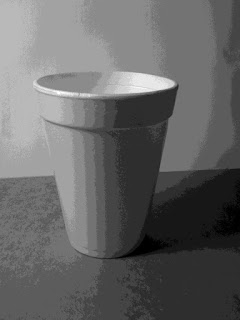The strength of all figure drawing comes from a mixture of formal skill and anatomical knowledge. Understanding the human body, interior as well as exterior, is essential. Through out history many cultures have preoccupied themselves with depicting the human form. Western Civilization Art reached its investigative height during the Renaissance, also a coinciding focus of science and art. Below is an example of Leonardo DaVinci's Vitruvian Man. This is a clear demonstration of the need to make sense of the human form- in this case the perfection of human form and its relation to the perfect language of Geometry, the perfect circle and square. The figure is inscribed with its proportions measured and reach touching these shapes. Also note Leonardo's proportions for the figure using the measure of a head.

In 1747 we see the example of one of the most accurate representations of the human skeleton in the work of Bernard Siegfried Albinus-
Corporis Humani. The following three examples are taken from
Drawing Lessons from the Great Masters, Robert Beverly Hale
. Here we see the human skeleton displayed not as static, but as if in motion. All bones and structures are presented in fine proportion, accuracy and rendering. Of specific interest is the TRUNK, or the area composed of the Cage and Pelvis. Please note the volume and form of each of these structures and how the artist represented them using line and value. Below is the Ventral position.

The Dorsal Position.

The Lateral Position.

The following four examples are taken from
Human Anatomy for Artists by Andras Szunyoghy and Dr Gyorgy Feher. Below is an example focusing on the trunk. Note the relationship of the shapes, proportions, and location of the cage and pelvis. Also see how the top of the cage tapers and slips up into the shoulder girdle (a horizontal ring composed of the clavicles and scapula.) Notice the hollow in the pelvis as it completes the volume of the cage.

Below is an example of just the Cage (or Thorax.) It is important to note the volumetric shape of this structure (the space inside is loosely egg shaped). Again we see the taper at the top, and the opening at the bottom. All ribs radiate from the spinal column and MOST attach at the sternum, some being short arcs others being long loping arcs. It is important to note that these ribs are not cylindrical curves, but thick flat curves, and in most cases with flex joints (look just to the left and right of the sternum to see a plane shift at that junction.)
Below is the Dorsal View of the Cage. Here we see the spinal column and ribs reaching around to the front. Again we see a plane shift on these flat rib shapes- they are not round rings, but a segmented arc (think about breathing and how important it is for some flex to happen.)
In this and the last example note how the artist presented the sense of volume inside the cage, through the ribs we see the continuation of each rib but it recedes through value shift and line (possibly atmospheric perspective!)
Below we see the Dorsal trunk (back) focusing of the shoulder girdle. Note the shape and form of the scapula, where it lies on the cage, the angle at which it rises to meet the clavicle on the front.

Below is an example of the Pelvis take from
The Human Figure, Jon H. Vanderpoel. Here we see a good description of contour line as it relates to the undulating form of the pelvis. Notice the butterfly shape of the structure and the hollows within. Important landmarks are the
ilium crest (upper most point of the pelvis, the semicircular shapes) and the
Ischium (rings at the bottom) and the
Sacrum (on the backside the area around the Coccyx)

Here is an example of the Spinal Column (
Human Anatomy for Artists) illustrating the three views and most importantly the gentle S- like curve. Notice the shapes of the vertebrae, cylindrical in front and wing protrusions in the back. Also observe the relative size of the vertebrae big to small top to bottom.

Another Example from John Vanderpoel illustrating the angles of these forms with the body. Note how and where they open and constrict on opposite sides.
 Value scale- low to high.
Value scale- low to high. A Value Finder- a tool to assist in discerning a true isolated value amidst many. This tool allows the viewer to locate the value within the viewing hole and see it unaffected. Within most complex value relationships of a subject, there is a lot of simultaneous contrast, and fluting making it difficult to see accurately. This Vale Finder is about a 5 on the Value scale- middle.
A Value Finder- a tool to assist in discerning a true isolated value amidst many. This tool allows the viewer to locate the value within the viewing hole and see it unaffected. Within most complex value relationships of a subject, there is a lot of simultaneous contrast, and fluting making it difficult to see accurately. This Vale Finder is about a 5 on the Value scale- middle.

































